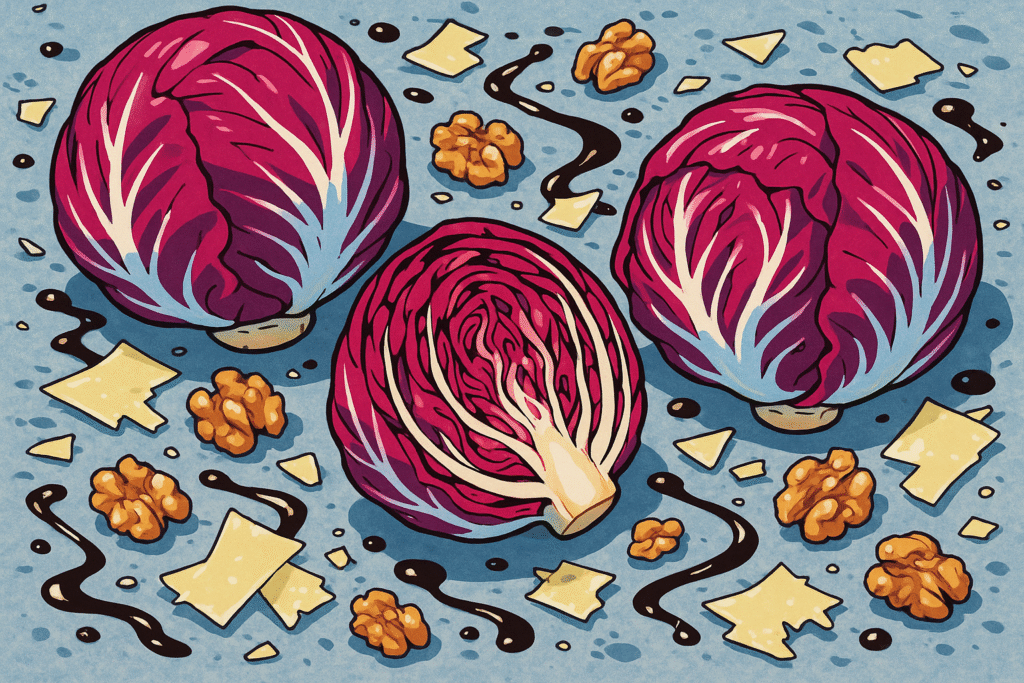Radicchio (Cichorium intybus)

About Radicchio
Radicchio is a leafy vegetable known for its striking burgundy color and assertive bitterness. Often mistaken for red cabbage, it’s actually a chicory — and it shines grilled, roasted, or raw in bold salads.
It adds visual drama and bite to any plate.
The History of Radicchio
Cultivated since Roman times, radicchio gained refined form in northern Italy, particularly in Veneto. It became popular in Italian Renaissance cuisine and remains central to regional specialties like Risotto al Radicchio.
Modern varieties were perfected in the late 19th century through selective breeding — most notably the Treviso type.
The Science of Radicchio
Radicchio is packed with antioxidants, especially anthocyanins, which give it that deep red-purple hue. It’s also rich in vitamin K, fiber, and inulin, a prebiotic that supports gut health.
Its bitterness comes from lactucin, a compound also found in other chicories and dandelion greens.
The Geography of Radicchio
Radicchio thrives in cooler climates and is mainly grown in Italy, especially around Treviso and Verona. It’s gaining popularity globally — cultivated in the U.S., France, and Australia.
In Veneto, it’s often grilled or baked to mellow its sharpness and highlight its sweetness.
Varieties of Radicchio
Chioggia
Round, cabbage-like head with deep red leaves. Common in salads.
Treviso
Elongated shape with a slightly milder flavor. Ideal for grilling.
Castelfranco
Creamy green leaves with burgundy speckles. Mild and tender.
Tardivo
Curled, decorative leaves with strong bitterness. Typically blanched and grilled.
Verona
Tightly packed head with a robust, slightly spicy flavor. Used cooked or raw.
FAQs All your questions about Radicchio: answered
Is radicchio the same as red cabbage?
No — red cabbage is a brassica; radicchio is a bitter chicory.
Why is radicchio so bitter?
It contains lactucin, a bitter compound common in chicories. Cooking softens the bite.
Can you cook radicchio?
Absolutely — grilling, roasting, or braising enhances its sweetness and depth.
What’s the best dressing for raw radicchio?
Something rich or acidic — balsamic, blue cheese, or citrus balances the bitterness.